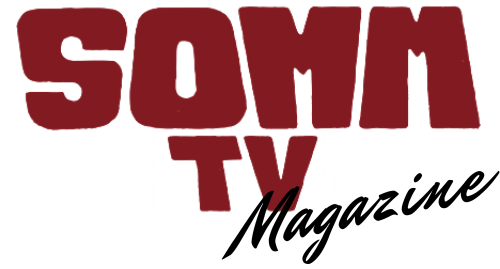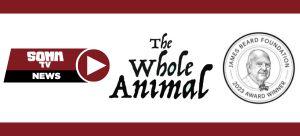The Champagne market is on fire. Over the last two years, it has returned a whopping 70.3% on investment. That’s the best performance of any wine region over that time. So, what’s behind this meteoric rise? In this article, we’ll break down the three reasons Champagne is the hottest region in fine wine.
#1 – Booming Market Share
The fine wine market of today would be unrecognizable a decade ago. Back then, Bordeaux dominated everything. According to Liv-ex, Bordeaux accounted for 95% of the secondary market by value. (As a point of reference, Google only accounts for 91.6% of the search engine market.)
Over the last decade, the market has broadened dramatically. Critics, collectors, and investors have realized that great wine can come from almost anywhere, not just Bordeaux. In that time, Champagne market shares have risen from 1.3% in 2010 to 11.1% today, a near tenfold increase!
To illustrate, here’s the fine wine’s market share of trade by value then versus now:
Fine Wine Market Share, 2010
1) Bordeaux – 95%
2) Champagne – 1.3%
3) Tuscany – 1.2%
4) Burgundy – 1%
5) The Rhône – <1%
6) The Rest of the World – <1%
Fine Wine Market Share, March 2022
1) Bordeaux – 36.3%
2) Burgundy – 24.7%
3) Champagne – 11.1%
4) Tuscany – 7.7%
5) United States – 5.7%
6) Rest of the World – 5.3%
7) Piedmont – 5.1%
8) The Rhône – 4.1%
#2 – Shifting Consumer Tastes
Under the Trump administration, the United States imposed a 25% tariff on still wines from France, Germany, Spain, and the United Kingdom. As a result, American wine lovers began seeking wine from tariff-free regions. Their top choices: Champagne and Italy.
Both regions saw their trade share rise in 2019. According to Liv-ex, Champagne’s trade share climbed from 10% to 14%. Meanwhile, Italy jumped from 18% to 25%.
In March 2021, the US lifted the tariff. However, those trade shares haven’t shifted too much. Champagne and Tuscany remain at the forefront of consumers’ minds, ranking third and fourth in regional trade share by value.
Additionally, the Champagne market benefits from a wider distribution network than other wines. You can find it in upscale restaurants and private cellars as well as at nightclubs and sporting events. After all, when was the last time you saw a winning team pop merlot in the locker room instead of Champagne?
#3 – The Supply Squeeze
Economics 101 says that prices change because of two factors: supply and demand. Shifting consumer tastes have generated more demand and, therefore, higher prices. Meanwhile, challenging harvests have limited supply, further driving up prices.
Since 2010, Champagne has exported more than 300 million bottles each year, with only two exceptions (2019 and 2020). Let’s start by examining the 2019 harvest, which was marred by April frost, record-breaking heatwaves, and extensive drought. Decanter estimated that the 2019 harvest fell 17% compared to the previous year. Even though the surviving grapes were of high quality, some producers suffered complete losses of their crops.
Champagne Shipments in Bottles, 2010 – 2021
– 2021: 320 million bottles
– 2020: 245 million bottles
– 2019: 297.5 million bottles
– 2018: 301.9 million bottles
– 2017: 307.3 million bottles
– 2016: 306.1 million bottles
– 2015: 313 million bottles
– 2014: 307 million bottles
– 2013: 305 million bottles
– 2012: 309 million bottles
– 2011: 323 million bottles
– 2010: 319 million bottles
Source: Association Viticole Champenoise
The most recent Champagne harvest wasn’t any better. Production dropped 24% to 30% due to severe spring frosts. Champagne lost 30% of its first buds, with Chardonnay hit hardest. The French government even pledged a €1 billion aid package to assist winemakers and farmers.
These challenging harvests mean that Champagne is leaving circulation (re: being consumed) faster than it’s entering it. Prices are rising as consumers try to buy bottles from the shrinking supply. Of course, if you’re an investor with Champagne in your portfolio, you’ve likely seen a healthy return on investment.
Top Performing Champagnes of 2021
Knowing the reasons behind the Champagne market boom is only half the battle. If you want to turn these insights into profits, you need to know which wines are investment-worthy. For that, let’s look at some of the top-performing Champagnes of 2021.
- 2005 Taittinger Comtes de Champagne Rosé – 305.1%
- 2012 Veuve Clicquot La Grande Dame x Yayoi Kusama – 186.6%
- 1990 Dom Pérignon P3 – 151%
- 2008 Bollinger Vieilles Vignes Françaises – 106.2%
- 2006 Taittinger Comtes de Champagne Blanc de Blancs – 98.9%
- 2005 Bollinger La Grande Année Rosé – 88.9%
- 2002 Salon, Le Mesnil-Sur-Oger Grand Cru – 80.6%
Source: Liv-ex
A couple of things stand out about this list. First, it’s filled with iconic house names. That’s not a surprise. Only one in 100 wines is investment-worthy. If an investor buys Champagne, they should seek out a brand that’s going to stand the test of time.
Second, there are a lot of vintage Champagnes. Again, this isn’t surprising considering the premium put on quality. We can expect vintage Champagnes to be higher quality since houses only release them during exceptional vintages.
Third, rarity can fuel massive returns. Salon is the best example. It only releases 60,000 bottles of its vintage Champagne per year. By comparison, Veuve Clicquot and Taittinger produce 19 million and 5.5 million bottles annually. The same applies to 2012 Veuve Clicquot La Grande Dame x Yayoi Kusama, a one-off collaboration between the Champagne house and the Japanese artist. Investors with the custom label have the bragging rights of a truly unique wine.
The Bottom Line
Champagne is enjoying multiple tailwinds en route to soaring prices. From shifting consumer tastes to booming market share, these factors have aligned just right to spur a 70.3% return on investment over the last two years. If you want a slice of Champagne in your portfolio, get started at Vinovest today.
To explore more about what Champagne and sparkling wine have to offer, check out the first season of SPARKLERS on SOMM TV. The entire first season of this James Beard Award nominated competition show challenges the next generation of wine experts to create winning food and wine pairings.









